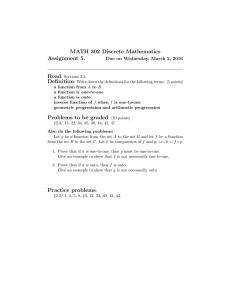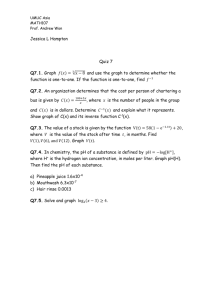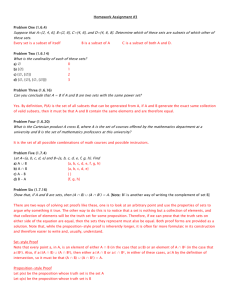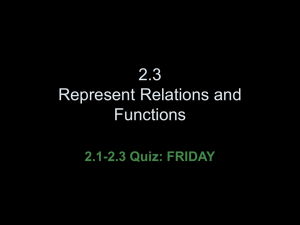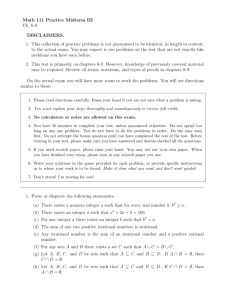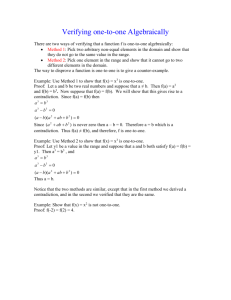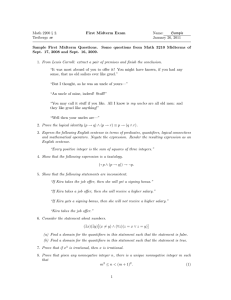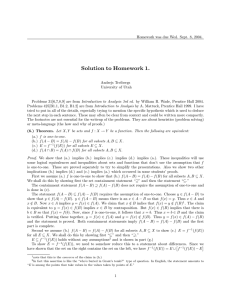WRITTEN PROJECT I, due Friday June 4th
advertisement
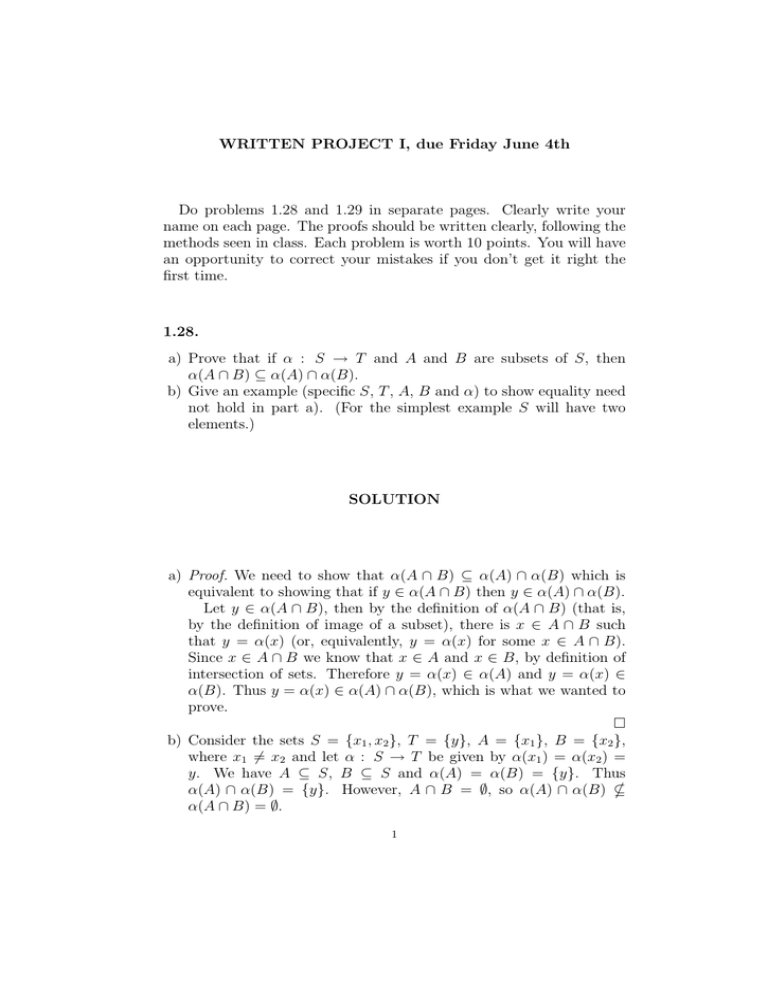
WRITTEN PROJECT I, due Friday June 4th
Do problems 1.28 and 1.29 in separate pages. Clearly write your
name on each page. The proofs should be written clearly, following the
methods seen in class. Each problem is worth 10 points. You will have
an opportunity to correct your mistakes if you don’t get it right the
first time.
1.28.
a) Prove that if α : S → T and A and B are subsets of S, then
α(A ∩ B) ⊆ α(A) ∩ α(B).
b) Give an example (specific S, T , A, B and α) to show equality need
not hold in part a). (For the simplest example S will have two
elements.)
SOLUTION
a) Proof. We need to show that α(A ∩ B) ⊆ α(A) ∩ α(B) which is
equivalent to showing that if y ∈ α(A ∩ B) then y ∈ α(A) ∩ α(B).
Let y ∈ α(A ∩ B), then by the definition of α(A ∩ B) (that is,
by the definition of image of a subset), there is x ∈ A ∩ B such
that y = α(x) (or, equivalently, y = α(x) for some x ∈ A ∩ B).
Since x ∈ A ∩ B we know that x ∈ A and x ∈ B, by definition of
intersection of sets. Therefore y = α(x) ∈ α(A) and y = α(x) ∈
α(B). Thus y = α(x) ∈ α(A) ∩ α(B), which is what we wanted to
prove.
b) Consider the sets S = {x1 , x2 }, T = {y}, A = {x1 }, B = {x2 },
where x1 6= x2 and let α : S → T be given by α(x1 ) = α(x2 ) =
y. We have A ⊆ S, B ⊆ S and α(A) = α(B) = {y}. Thus
α(A) ∩ α(B) = {y}. However, A ∩ B = ∅, so α(A) ∩ α(B) *
α(A ∩ B) = ∅.
1
2
1.29. Prove that a mapping α : S → T is one-to-one iff α(A ∩ B) =
α(A)∩α(B) for every pair of subsets A and B of S. (Compare Problem
1.28.)
SOLUTION
Proof. We have a biconditional statement “ P iff Q”, thus we need to
prove both the necessity (that is, “if P then Q”) and the sufficiency
(that is, “if Q then P”).
Necessity: We need to show that if a mapping α : S → T is oneto-one then α(A ∩ B) = α(A) ∩ α(B) for every pair of subsets A and
B of S. So, we assume that the mapping α : S → T is one-to-one.
In order to prove the equality α(A ∩ B) = α(A) ∩ α(B) we need to
show that both inclusions α(A ∩ B) ⊆ α(A) ∩ α(B) and α(A) ∩ α(B) ⊆
α(A ∩ B) hold. The first inclusion, α(A ∩ B) ⊆ α(A) ∩ α(B), was
proved to be true for every mapping α (that is, α does not need to be
one-to-one for the inclusion to be true) in problem 1.28. So, we only
need to show α(A) ∩ α(B) ⊆ α(A ∩ B) provided that α is one-to-one.
Let y ∈ α(A) ∩ α(B), then, by the definition of intersection of two
sets, y ∈ α(A) and y ∈ α(B). Since y ∈ α(A), we have y = α(x1 )
for some x1 ∈ A (by definition of image of a subset); likewise, since
y ∈ α(B), we have y = α(x2 ) for some x2 ∈ A. Since α is one-to-one
and y = α(x1 ) = α(x2 ) it has to be x1 = x2 ; thus x1 ∈ A ∩ B, that is
y = α(x1 ) where x1 ∈ A ∩ B, namely, y ∈ α(A ∩ B). This proves the
necessity.
Sufficiency: Now we need to show that if a mapping α : S → T is
such that
α(A ∩ B) = α(A) ∩ α(B)
(∗)
for every pair of subsets A and B of S then α is one-to-one. So, we
assume we have a mapping α : S → T with the property (∗) and let
x1 , x2 ∈ S be any pair of elements in S such that x1 6= x2 . We need to
show that α(x1 ) 6= α(x2 ), that is α is one-to-one. Since the property
(∗) is true for any pair of subsets A and B of S, in particular it will
be true if we let A = {x1 } and B = {x2 }. Now, we have that α(A) =
{y ∈ T : y = α(x), x ∈ A} = {α(x1 )}; likewise, α(B) = {α(x2 )}.
We also have, A ∩ B = ∅ since x1 6= x2 , thus α(A ∩ B) = ∅. Since
α(A ∩ B) = α(A) ∩ α(B), it has to be then α(A) ∩ α(B) = ∅ and
therefore α(x1 ) 6= α(x2 ). This proves the sufficiency and concludes the
proof.
